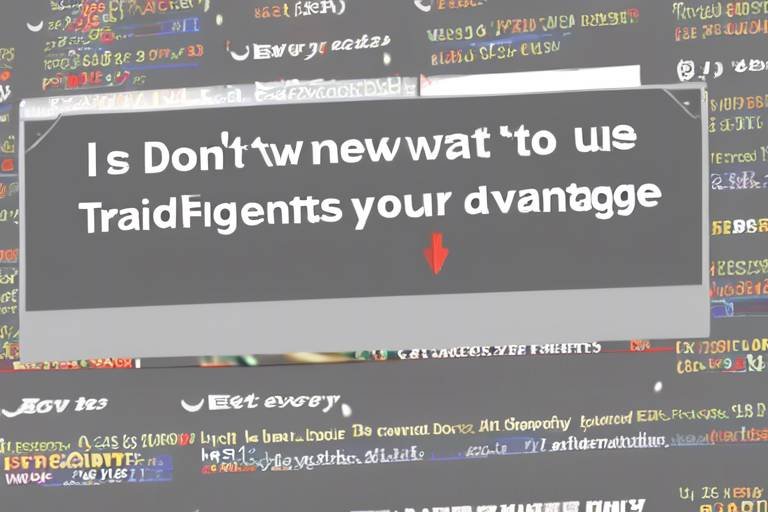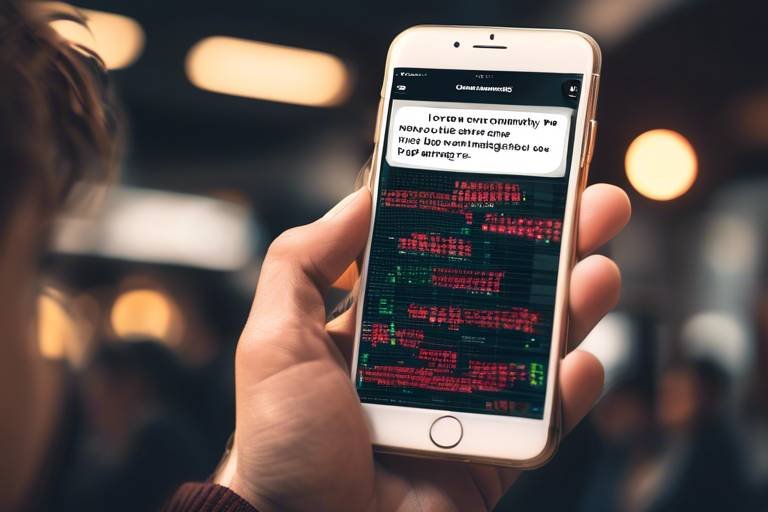Understanding the Role of Trading Volume in Price Movement
When it comes to navigating the financial markets, understanding trading volume can feel like having a secret weapon. But what exactly is trading volume? In simple terms, it refers to the total number of shares or contracts traded for a particular asset during a specific time frame. Imagine it as the heartbeat of the market—when the volume spikes, it often indicates that something significant is happening. Conversely, low volume can signify a lack of interest or uncertainty among traders.
The importance of trading volume cannot be overstated. It serves as a crucial indicator for traders and investors alike, providing insights into market dynamics that can influence price movements. Think of trading volume as the fuel that drives price action; without sufficient volume, prices can remain stagnant, making it challenging to execute trades effectively. This article delves deep into the intricate relationship between trading volume and price movement, helping you grasp how this knowledge can enhance your trading strategies.
To fully appreciate the role of trading volume, it’s essential to understand its fundamental aspects. Trading volume is typically reported on a daily basis, but it can also be analyzed over longer periods, such as weekly or monthly. This metric is not just a number; it tells a story about the market's sentiment and liquidity. High trading volume often signals strong interest in an asset, which can lead to significant price movements, while low volume may indicate a lack of conviction among traders.
In the world of trading, volume is often analyzed alongside price trends. For instance, if a stock experiences a price increase accompanied by high volume, it can be interpreted as a strong bullish signal. On the other hand, if prices rise with low volume, it may indicate a lack of genuine interest, suggesting that the upward trend might not be sustainable. In essence, volume acts as a confirmation tool, helping traders validate their strategies and decisions.
When you think about price trends, it’s important to consider how trading volume plays a pivotal role. Volume can act as a precursor to price movements, often signaling potential reversals or continuations in trends. For example, when volume increases during a price rally, it suggests that more traders are buying into the momentum, reinforcing the trend. Conversely, if a stock is declining in price but experiencing high volume, it could signal a potential reversal, indicating that sellers are becoming increasingly aggressive.
Understanding market sentiment is crucial for any trader, and trading volume is a key indicator of this sentiment. When you see a sudden spike in volume, it often reflects a collective emotional response from traders—whether it’s fear, greed, or anticipation. For instance, during market news or earnings announcements, volume can surge as traders react to new information, leading to significant price movements. Recognizing these volume spikes can provide traders with valuable insights into market psychology and potential future movements.
Identifying trends is one of the most important skills a trader can develop. By analyzing trading volume, you can distinguish between bullish and bearish trends effectively. A bullish trend is characterized by rising prices and increasing volume, indicating strong buying interest. In contrast, a bearish trend often features declining prices and increasing volume, suggesting that sellers are in control. Understanding these dynamics can help traders make informed decisions about when to enter or exit trades.
There are several common volume patterns that traders should be aware of. For example, volume spikes can indicate potential breakout points, while volume divergences can signal reversals. By observing these patterns in conjunction with price action, traders can uncover potential trading opportunities that may not be immediately apparent. For instance, if a stock is trading sideways but suddenly experiences a volume surge, it might be on the verge of a significant price move.
Incorporating volume indicators into your technical analysis toolkit can enhance your trading strategies. Some popular volume indicators include the On-Balance Volume (OBV), Accumulation/Distribution Line, and Volume Weighted Average Price (VWAP). These indicators help traders assess the strength of price movements and make better-informed decisions. For example, the OBV uses volume flow to predict changes in stock price, making it a valuable tool for identifying potential trend reversals.
Trading volume behaves differently across various market conditions, such as bullish, bearish, or sideways markets. In a bullish market, you might notice increasing volume as more traders jump on the bandwagon, driving prices higher. Conversely, in a bearish market, volume can also increase as panic selling takes hold. In sideways markets, volume may dwindle as traders await clearer signals for direction. Understanding these behaviors can help you adapt your trading strategies accordingly.
One of the most telling moments for trading volume is during earnings reports. These reports can lead to significant price reactions based on the results compared to market expectations. High trading volume during these times can indicate strong market sentiment—either positive or negative—about the company's performance. Traders often use this information to forecast potential price movements, making it a critical period for volume analysis.
Finally, it’s essential to recognize the relationship between trading volume and market liquidity. High trading volume typically translates to greater liquidity, allowing traders to execute orders more efficiently without causing significant price changes. On the other hand, low volume can lead to slippage and increased transaction costs, making it more challenging to enter or exit positions. Understanding this relationship is vital for effective trade execution.
In conclusion, trading volume is a fundamental component of market analysis that every trader should understand. It provides critical insights into market sentiment, helps identify trends, and enhances trading strategies. By analyzing volume alongside price movements, traders can make more informed decisions, ultimately improving their chances of success in the financial markets. So, the next time you dive into your trading strategy, remember to keep an eye on the volume—it just might be the key to unlocking your trading potential.
- What is trading volume? Trading volume refers to the total number of shares or contracts traded for a particular asset during a specific time frame.
- How does trading volume affect price movement? Higher trading volume often indicates stronger interest in an asset, leading to more significant price movements, while lower volume can suggest a lack of conviction.
- What are some common volume indicators? Popular volume indicators include On-Balance Volume (OBV), Accumulation/Distribution Line, and Volume Weighted Average Price (VWAP).
- Why is volume important during earnings reports? Volume can indicate market sentiment regarding a company's performance, helping traders forecast potential price reactions.

The Basics of Trading Volume
When diving into the world of financial markets, one term that often comes up is trading volume. But what exactly does it mean? In simple terms, trading volume refers to the total number of shares or contracts traded for a specific security during a given time period. Think of it as the heartbeat of the market; it indicates how active a particular stock or asset is. High trading volume typically signifies strong interest and activity, while low volume can suggest a lack of enthusiasm among traders.
Understanding trading volume is crucial for both new and seasoned traders. It serves as a key indicator of market strength and can significantly impact price movements. For instance, when a stock experiences a surge in volume, it often precedes a notable price change, whether upwards or downwards. This is why volume is often analyzed alongside price trends to make informed trading decisions.
To further illustrate its importance, consider the following table that outlines the relationship between trading volume and market behavior:
| Volume Level | Market Behavior | Implication |
|---|---|---|
| High Volume | Strong upward or downward movement | Potential trend continuation or reversal |
| Low Volume | Price stagnation | Possible upcoming volatility |
| Volume Spike | Sudden price movement | Indication of news or events impacting the market |
In addition to understanding volume levels, it's essential to recognize the context in which trading volume occurs. For example, a spike in volume during a stock's earnings report can indicate heightened interest and potential price movement as traders react to the news. Conversely, if a stock is trading at low volume, it may not be the best candidate for a trade, as the lack of activity can lead to wider spreads and increased slippage.
In summary, trading volume is not just a number; it is a vital component of market analysis that helps traders gauge the strength of price movements. By paying attention to volume, traders can make more informed decisions, identify potential trading opportunities, and better understand market sentiment. So, the next time you look at a stock chart, remember to consider the volume—it might just be the key to unlocking your trading success!
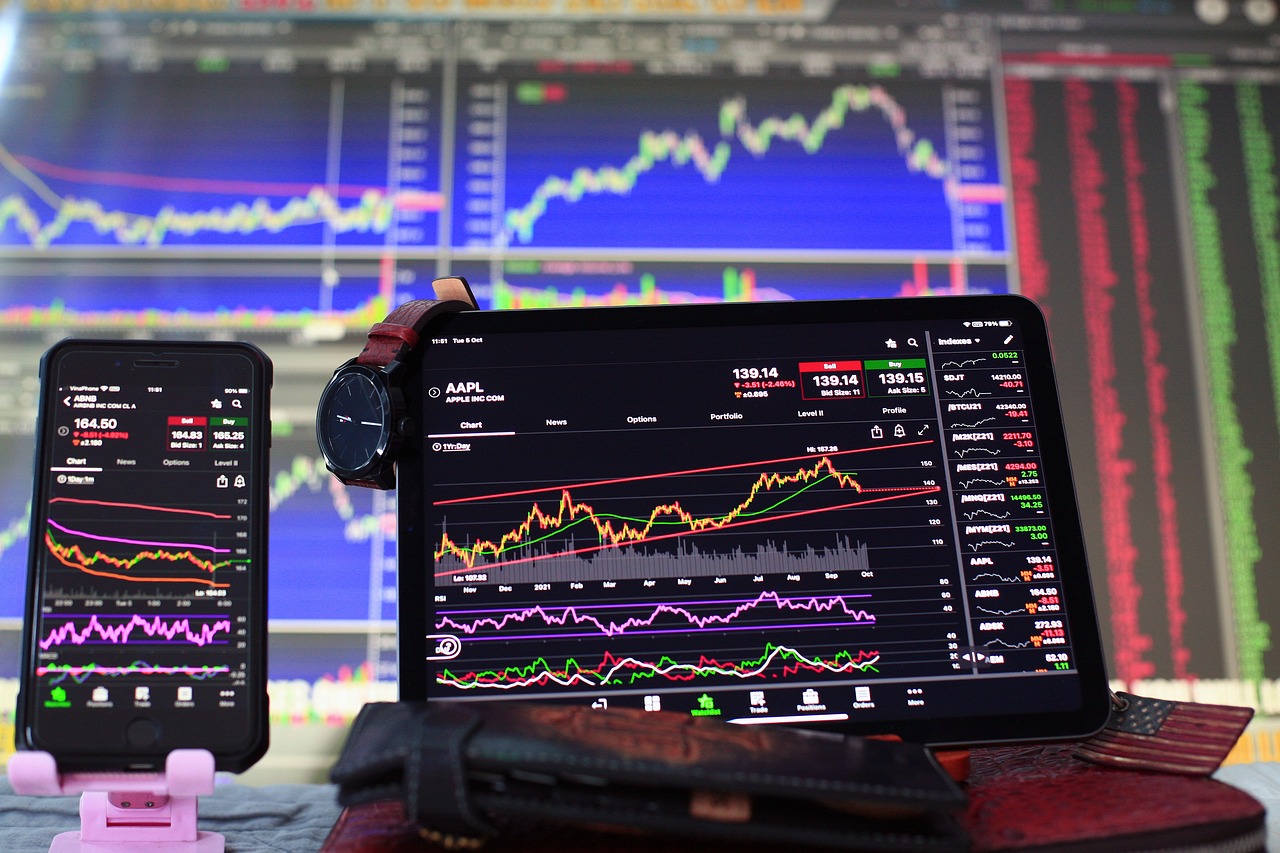
How Volume Affects Price Trends
When it comes to trading, one of the most critical factors that traders must understand is the relationship between trading volume and price trends. You might wonder, why is volume so important? Well, think of trading volume as the lifeblood of market activity. Just like a bustling city street, high trading volume indicates that many people are participating in the market, which can lead to significant price movements. On the other hand, low volume is akin to a deserted street—there's not much happening, and price movements can be erratic and unreliable.
In essence, trading volume can act as a precursor to price changes. For instance, when you see a sudden spike in volume, it often signals that something significant is happening. This could be a news event, earnings report, or even a broader market sentiment shift. Traders pay close attention to these volume spikes because they can indicate potential price movements or reversals. For example, if a stock has been trending downwards but suddenly experiences a surge in volume, it might suggest that buyers are stepping in, potentially leading to a price reversal.
Moreover, volume can help traders identify the strength of a price trend. If prices are rising but volume is decreasing, it may signal that the trend is losing momentum. Conversely, if prices are climbing alongside increasing volume, it typically indicates a strong bullish trend. This relationship between price and volume is crucial for traders looking to make informed decisions. By analyzing volume alongside price action, they can better assess whether a trend is likely to continue or reverse.
Understanding market sentiment is another essential aspect of how volume affects price trends. When trading volume spikes, it often reflects heightened interest or concern among traders. For example, during a market rally, increased trading volume can indicate that many participants are optimistic about future price increases. On the flip side, a volume surge during a price drop may suggest panic selling, where traders are eager to exit their positions. This psychological element is vital for traders to grasp, as it can provide insights into potential future price movements.
Identifying whether a market is bullish or bearish through volume analysis can be a game-changer for traders. A bullish trend is characterized by rising prices and increasing volume, suggesting that buyers are in control. Conversely, a bearish trend is marked by falling prices and increasing volume, indicating that sellers are dominating the market. By recognizing these trends, traders can make strategic decisions, such as entering long positions during bullish trends or shorting during bearish phases.
There are several common volume patterns that traders look for, and understanding these can provide valuable insights into price action. For instance:
- Volume Climax: A sudden surge in volume at the top of a price move can indicate a potential reversal.
- Volume Divergence: When price moves in one direction but volume moves in the opposite direction, it may signal a weakening trend.
- Accumulation and Distribution: High volume during price consolidation can indicate accumulation (buying) or distribution (selling) phases.
By recognizing these patterns, traders can position themselves to take advantage of potential price movements, maximizing their trading strategies.

Volume and Market Sentiment
When it comes to trading, understanding market sentiment is like having a secret weapon in your arsenal. It’s not just about the numbers; it’s about what those numbers represent. Trading volume serves as a powerful indicator of market sentiment, reflecting the collective mood of traders and investors. Think of it as the heartbeat of the market—when the volume spikes, it’s as if the market is shouting, and when it drops, it whispers.
So, how does trading volume relate to market sentiment? Well, imagine you’re at a concert. If the crowd is roaring and jumping up and down, you can bet that the atmosphere is electric. Conversely, if the audience is sitting quietly, you know something’s off. In the same way, a surge in trading volume often indicates strong buying or selling interest, suggesting that traders are either excited about a potential price increase or fearful of a decline. This dynamic can provide crucial insights into the prevailing sentiment.
For instance, consider the following scenarios:
- High Volume with Rising Prices: This typically signals a strong bullish sentiment. Traders are confident, and many are buying into the asset, expecting prices to continue climbing.
- High Volume with Falling Prices: This indicates a bearish sentiment where traders are selling off their positions, often driven by fear or negative news.
- Low Volume with Price Increases: This can be a red flag, suggesting that the upward movement may not be sustainable, as it lacks strong support from buyers.
Understanding these patterns can help traders anticipate potential market movements. For example, a sudden spike in volume can indicate that a significant news event or announcement is about to occur, prompting traders to act quickly. It’s like catching a whiff of smoke before the fire alarm goes off; being aware of volume changes can give you the edge you need to make informed decisions.
Moreover, volume analysis can also reveal divergences between price and volume. If prices are rising but volume is declining, it might suggest a weakening trend. Conversely, if prices are falling while volume is increasing, it could indicate that sellers are becoming more aggressive, possibly leading to a reversal. This kind of analysis allows traders to gauge whether a trend is likely to continue or if a shift is imminent.
In conclusion, recognizing the relationship between trading volume and market sentiment is essential for any trader looking to navigate the complex waters of financial markets. By paying attention to volume trends, you can gain valuable insights into the market's mood, helping you make more informed and strategic decisions.
Q: How can I use trading volume to improve my trading strategy?
A: By monitoring volume trends, you can identify potential price movements and assess market sentiment, allowing you to make more informed trading decisions.
Q: What does it mean if there is high trading volume but prices are not moving much?
A: This could indicate a consolidation phase where traders are indecisive, or it may suggest that a significant move is forthcoming.
Q: Can volume analysis predict market reversals?
A: Yes, sudden changes in volume can often signal potential reversals, especially when combined with other technical indicators.

Identifying Bullish and Bearish Trends
When it comes to trading, understanding whether the market is in a bullish or bearish trend is crucial for making informed decisions. A bullish trend indicates that prices are generally rising, while a bearish trend signifies that prices are falling. But how can traders identify these trends effectively? It all comes down to analyzing trading volume alongside price movements. Think of trading volume as the fuel that drives the price of a stock; without enough fuel, the vehicle (or price) can't move forward efficiently.
One of the primary indicators of a bullish trend is a significant increase in trading volume accompanying rising prices. This surge indicates strong market interest and buying pressure, suggesting that investors are confident in the stock's upward trajectory. Conversely, if prices are rising but volume is declining, it could signal a potential reversal, as fewer traders are willing to buy at higher prices. In this case, the trend may not be sustainable.
On the flip side, identifying a bearish trend involves looking for a spike in trading volume when prices are falling. High volume during a price decline suggests that sellers are dominating the market, which can lead to further price drops. If prices are falling but volume is low, it might indicate that the selling pressure is weak, potentially signaling a reversal or consolidation phase. This is where volume analysis becomes a powerful tool for traders.
To make this clearer, let's consider a simple table that outlines the key indicators of bullish and bearish trends:
| Trend Type | Price Movement | Volume Behavior | Implications |
|---|---|---|---|
| Bullish | Rising | Increasing | Strong buying interest; potential for further gains |
| Bullish (Weak) | Rising | Decreasing | Possible reversal; caution advised |
| Bearish | Falling | Increasing | Strong selling pressure; potential for further declines |
| Bearish (Weak) | Falling | Decreasing | Possible reversal; watch for signs of recovery |
In addition to volume, traders often look for specific patterns to confirm trends. For instance, the Accumulation/Distribution line is a popular tool that helps traders assess whether a stock is being accumulated (bought) or distributed (sold). If the line is trending upwards while prices are rising, it suggests that buyers are in control. Conversely, if the line is falling while prices are declining, it indicates that sellers are dominating the market.
Ultimately, identifying bullish and bearish trends through volume analysis requires a keen eye and a solid understanding of market dynamics. By combining volume data with price action, traders can gain valuable insights and make more informed trading decisions. Remember, trends are like waves in the ocean; they can shift quickly, and being able to read the signs can help you ride the waves successfully.
- What is trading volume? Trading volume refers to the total number of shares or contracts traded for a specific security within a given timeframe.
- Why is trading volume important? It provides insights into market activity and liquidity, helping traders understand price movements and market sentiment.
- How can I use volume to identify trends? By analyzing the relationship between price movements and volume, traders can identify potential bullish or bearish trends.
- What are some common volume indicators? Popular volume indicators include the Accumulation/Distribution line, On-Balance Volume (OBV), and Volume Moving Averages.

Volume Patterns and Price Action
When it comes to trading, understanding volume patterns is like having a secret decoder ring that helps you interpret the market's language. Volume patterns can provide crucial insights into the underlying strength or weakness of a price movement. Essentially, they are the footprints left behind by buyers and sellers, revealing their intentions and the overall market sentiment. Just like a detective piecing together clues, traders can analyze these patterns to make informed decisions.
One of the most common volume patterns to watch for is the increase in volume during price rises. This scenario indicates strong buying interest, suggesting that the price might continue to climb. On the flip side, if you observe a decrease in volume during a price increase, it may signal that the rally is losing steam, and a reversal could be on the horizon. Think of it as a party: if the music is pumping and more people are arriving, the vibe is likely to stay high. But if the crowd starts thinning out, it might be time to pack up and head home.
Another important volume pattern is the volume spike. A sudden surge in volume often precedes significant price movements. For instance, if a stock experiences a volume spike alongside a breakout from a resistance level, it could indicate a strong trend is forming. Conversely, if the price drops sharply with a volume spike, it may suggest panic selling. These spikes can serve as red flags or green lights, guiding traders on when to enter or exit positions.
To make things a bit clearer, let’s take a look at a simple table that outlines some typical volume patterns and their implications for price action:
| Volume Pattern | Implication |
|---|---|
| High Volume + Price Increase | Strong bullish sentiment; potential continuation of the trend. |
| High Volume + Price Decrease | Strong bearish sentiment; potential continuation of the downtrend. |
| Low Volume + Price Increase | Weak bullish sentiment; potential reversal or correction. |
| Low Volume + Price Decrease | Weak bearish sentiment; potential reversal or stabilization. |
Understanding these patterns not only helps traders identify potential entry and exit points but also aids in confirming the validity of price movements. For example, if a stock breaks out of a resistance level with high volume, it’s likely that the breakout is legitimate. However, if it breaks out with low volume, traders may want to be cautious, as the move could be a false alarm.
In summary, volume patterns are essential for interpreting price action effectively. By keeping an eye on these patterns, traders can gain a better understanding of market dynamics, enhancing their trading strategies and improving their chances of success. After all, in the world of trading, knowledge is power, and volume patterns are a key piece of that puzzle.
- What is trading volume? Trading volume refers to the total number of shares or contracts traded for a specific security during a given period.
- How can I use volume in my trading strategy? You can use volume to confirm trends, identify potential reversals, and gauge market sentiment.
- What does it mean if volume increases but price decreases? This could indicate selling pressure, suggesting that traders are exiting positions, which might lead to further price declines.
- Are there specific volume indicators I should know about? Yes, indicators like On-Balance Volume (OBV), Volume Oscillator, and Chaikin Money Flow can be very helpful in analyzing volume trends.

Volume Indicators in Technical Analysis
When diving into the world of technical analysis, understanding volume indicators is like having a secret weapon in your trading arsenal. These indicators are crucial because they provide insights into the strength or weakness of a price trend. Think of volume as the fuel that drives price movements; without it, even the most promising trends can stall. So, what exactly are these volume indicators, and how can they enhance your trading strategies?
First off, let’s talk about some of the most popular volume indicators. Each of these tools offers unique insights that can help traders make informed decisions:
- On-Balance Volume (OBV): This indicator uses volume flow to predict changes in stock price. The idea is simple: if a security is seeing an increasing OBV, it suggests that buyers are willing to step in, which may lead to price increases.
- Chaikin Money Flow (CMF): This combines both price and volume to measure the buying and selling pressure for a specific period. A positive CMF indicates buying pressure, while a negative CMF signals selling pressure.
- Accumulation/Distribution Line: This tool helps traders understand whether a stock is being accumulated (bought) or distributed (sold). A rising line suggests accumulation, while a falling line indicates distribution.
These indicators are not just numbers on a chart; they tell a story about market sentiment. For instance, if you notice a significant increase in volume while a stock's price is rising, it often indicates strong buying interest, signaling that the trend may continue. Conversely, if prices are rising but volume is declining, it could be a warning sign that the trend is losing momentum. This is where the art of reading volume comes into play — it’s about interpreting the data rather than just looking at it.
Moreover, using volume indicators in conjunction with price action can provide a more comprehensive view of market dynamics. For example, when you see a breakout from a resistance level accompanied by high volume, it’s often a confirmation of the breakout's strength. On the other hand, if a breakout occurs on low volume, it might be a false signal, leading to potential losses for traders who jump in too quickly.
In conclusion, volume indicators are vital tools in technical analysis that can significantly enhance your trading strategies. By understanding how to interpret these indicators, you can better gauge market sentiment and make more informed decisions. Remember, the key is to not rely solely on volume indicators but to use them as part of a broader trading strategy that includes price action and market trends.
Q1: How can volume indicators improve my trading strategy?
A1: Volume indicators help you understand the strength of price movements, allowing you to make more informed decisions about when to enter or exit trades.
Q2: Are volume indicators suitable for all types of trading?
A2: Yes, volume indicators can be beneficial for various trading styles, including day trading, swing trading, and long-term investing.
Q3: Can I rely solely on volume indicators for my trading decisions?
A3: While volume indicators are useful, it's essential to combine them with other technical analysis tools and market research for a well-rounded trading strategy.

Volume in Different Market Conditions
Understanding how trading volume behaves in various market conditions is crucial for any trader or investor looking to make informed decisions. Markets can be categorized into three primary conditions: bullish, bearish, and sideways. Each of these conditions presents unique challenges and opportunities, and the volume can provide significant insights into market dynamics.
In a bullish market, where prices are generally rising, trading volume often increases as more investors jump on the bandwagon, hoping to capitalize on the upward momentum. This surge in volume can be a powerful confirmation of the trend, suggesting that the price movement is supported by strong market participation. However, it's essential to differentiate between healthy volume increases and spikes that might indicate speculative behavior. For instance, if the price rises sharply but the volume does not follow suit, it could signal a potential reversal or a lack of conviction in the rally.
Conversely, in a bearish market, where prices are on a downward trajectory, volume can serve as an indicator of market sentiment. High trading volume during price declines often suggests that many investors are selling off their positions, which can exacerbate the downtrend. However, if volume decreases while prices continue to fall, it may indicate that the selling pressure is waning, potentially signaling a bottom. In this context, volume acts as a barometer for market psychology, helping traders gauge whether to hold onto their positions or cut their losses.
Sideways markets, characterized by a lack of clear direction, present a different set of challenges. Here, trading volume can fluctuate significantly. During periods of consolidation, volume may decrease as traders await clearer signals for a breakout. However, sudden spikes in volume can indicate potential breakouts or breakdowns, making it crucial for traders to remain vigilant. Understanding the context of volume changes in these scenarios can help traders make better decisions about when to enter or exit trades.
To further elaborate on the relationship between volume and market conditions, consider the following table that summarizes volume behavior in different market scenarios:
| Market Condition | Volume Behavior | Implications for Traders |
|---|---|---|
| Bullish | Increasing volume | Confirming upward trends; potential for continued price increases |
| Bearish | High volume on declines | Indicates strong selling pressure; possible reversal if volume decreases |
| Sideways | Fluctuating volume | Watch for breakouts; volume spikes can signal potential moves |
In conclusion, recognizing how trading volume interacts with different market conditions is essential for developing effective trading strategies. By analyzing volume trends, traders can better anticipate price movements and make more informed decisions that align with the prevailing market sentiment. As you navigate through various market environments, remember that volume is not just a number; it’s a reflection of the collective behavior of market participants.
Q1: How can I determine if a volume spike is significant?
A volume spike is often considered significant if it exceeds the average volume for that security over a specific period. Monitoring volume relative to historical averages can provide insights into whether the spike is indicative of a genuine trend change or merely noise.
Q2: Does high volume always indicate a strong trend?
Not necessarily. While high volume can confirm a strong trend, it can also indicate panic selling or buying, leading to potential reversals. Context is critical, and traders should analyze price action alongside volume.
Q3: How do I use volume in my trading strategy?
Incorporate volume analysis by looking at volume trends in conjunction with price movements. Use volume indicators like the On-Balance Volume (OBV) or Volume Weighted Average Price (VWAP) to enhance your trading decisions.
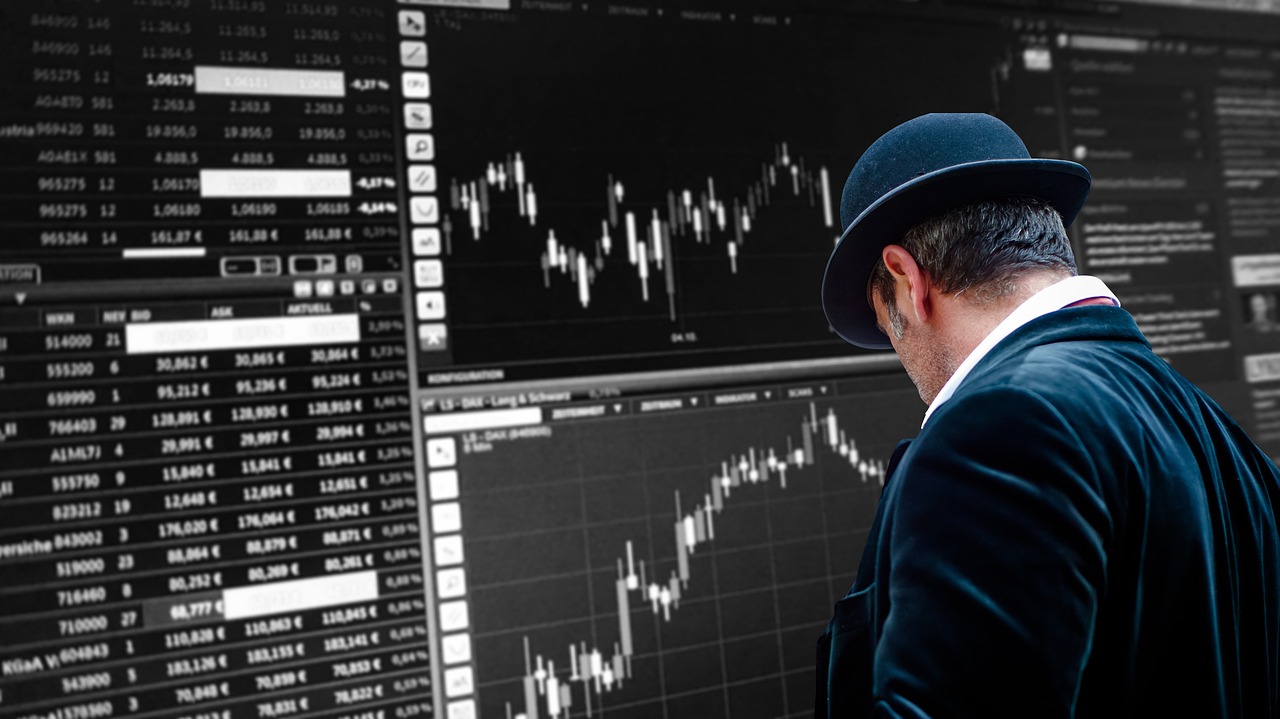
Volume During Earnings Reports
When it comes to earnings reports, trading volume can act like a loudspeaker, amplifying the underlying sentiments of investors. Imagine this scenario: a company announces its quarterly earnings, and the market is buzzing with anticipation. Suddenly, the stock experiences a significant spike in volume. What does this mean? It’s a clear indication that investors are reacting to the news, whether it’s a surprise profit or a disappointing loss. High trading volume during these reports often signals heightened interest and can lead to substantial price movements.
In fact, the relationship between trading volume and earnings announcements is crucial for traders looking to capitalize on potential price fluctuations. When earnings exceed expectations, the volume often surges as traders rush to buy shares, driving the price up. Conversely, if a company reports disappointing earnings, the volume may also spike, but this time, it usually reflects a rush to sell. This phenomenon underscores the importance of monitoring volume alongside price changes during earnings season.
To illustrate the impact of volume during earnings reports, let’s consider a hypothetical example. Company XYZ is set to release its earnings report. Analysts predict a profit of $1.00 per share, but the actual report reveals a profit of $1.50. In the hours leading up to the announcement, trading volume gradually increases. Once the news breaks, volume skyrockets as investors react. The result? The stock price jumps significantly, confirming the correlation between high volume and positive earnings surprises.
| Scenario | Expected Earnings | Actual Earnings | Volume Reaction | Price Movement |
|---|---|---|---|---|
| Positive Surprise | $1.00 | $1.50 | High | Increase |
| Negative Surprise | $1.00 | $0.50 | High | Decrease |
| In-Line Earnings | $1.00 | $1.00 | Low | Stable |
It’s essential to note that not all volume spikes during earnings reports lead to dramatic price changes. Sometimes, the volume may increase without a corresponding price movement, indicating indecision in the market. In such cases, traders should be cautious, as this could suggest a lack of consensus among investors regarding the company's future prospects.
Moreover, understanding the context of volume during earnings reports can provide deeper insights into market behavior. For instance, if a stock consistently experiences high volume during earnings announcements, this could indicate that traders are using this information to make strategic decisions. On the other hand, if a stock shows low volume during such events, it may suggest that investors are less interested or uncertain about the company’s performance.
In summary, trading volume during earnings reports is a critical metric that traders should not overlook. It serves as a barometer of market sentiment and can provide valuable insights into potential price movements. By analyzing volume in conjunction with earnings results, traders can make more informed decisions and potentially enhance their trading strategies.
- Why is trading volume important during earnings reports?
Trading volume indicates investor interest and can signal potential price movements based on earnings surprises. - What does high volume during an earnings report mean?
High volume typically suggests strong investor reaction, either positive or negative, to the earnings announcement. - Can low volume during earnings reports be a concern?
Yes, low volume may indicate a lack of interest or uncertainty among investors, which could lead to stagnant price movements.

Volume and Market Liquidity
When we talk about trading volume, it’s essential to understand its close relationship with market liquidity. Imagine you’re at a bustling marketplace where everyone is eager to buy and sell. In such an environment, transactions happen quickly and prices reflect true value. Now, think of a quiet, deserted marketplace where only a handful of people are trading. Here, it’s much harder to sell your goods without drastically lowering the price. This analogy perfectly illustrates how volume and liquidity work together in financial markets.
Market liquidity refers to how easily assets can be bought or sold in the market without affecting their price. High trading volume generally indicates high liquidity, which means traders can enter and exit positions with ease. Conversely, low trading volume can lead to increased price volatility and slippage, making it difficult for traders to execute their strategies effectively. In essence, if you want to make a trade, you want to do it in a liquid market where there are plenty of buyers and sellers.
To give you a clearer picture, consider the following table that highlights the differences between high and low liquidity environments:
| Liquidity Condition | High Liquidity | Low Liquidity |
|---|---|---|
| Transaction Speed | Fast | Slow |
| Price Stability | Stable | Volatile |
| Slippage | Minimal | High |
| Market Impact | Low | High |
As you can see, the implications of volume on liquidity are profound. When volume spikes, it often indicates a surge in interest in a particular asset. This can be due to news, earnings reports, or other significant events. For traders, recognizing these volume spikes is crucial. They can signal not just the potential for price movements but also the health of the market itself.
Moreover, during periods of high trading volume, the market tends to be more liquid, allowing for better execution of trades at desired prices. This is particularly important for large institutional investors who need to move substantial amounts of capital without causing significant price fluctuations. On the flip side, in low-volume scenarios, even small trades can lead to price swings, creating an environment fraught with risk.
In conclusion, understanding the interplay between trading volume and market liquidity is vital for any trader or investor. It can mean the difference between making a profit and incurring a loss. Always keep an eye on the volume when analyzing potential trades; it’s a key indicator of how smoothly you can navigate the market waters.
- What is trading volume? Trading volume refers to the total number of shares or contracts traded for a specific security during a given period.
- How does volume affect price? Increased volume can indicate strong interest in a security, often leading to significant price movements.
- What does low trading volume indicate? Low trading volume may suggest a lack of interest in a security, potentially leading to higher volatility and price slippage.
- Why is liquidity important in trading? Liquidity allows traders to buy or sell assets quickly without causing a significant impact on the asset's price.
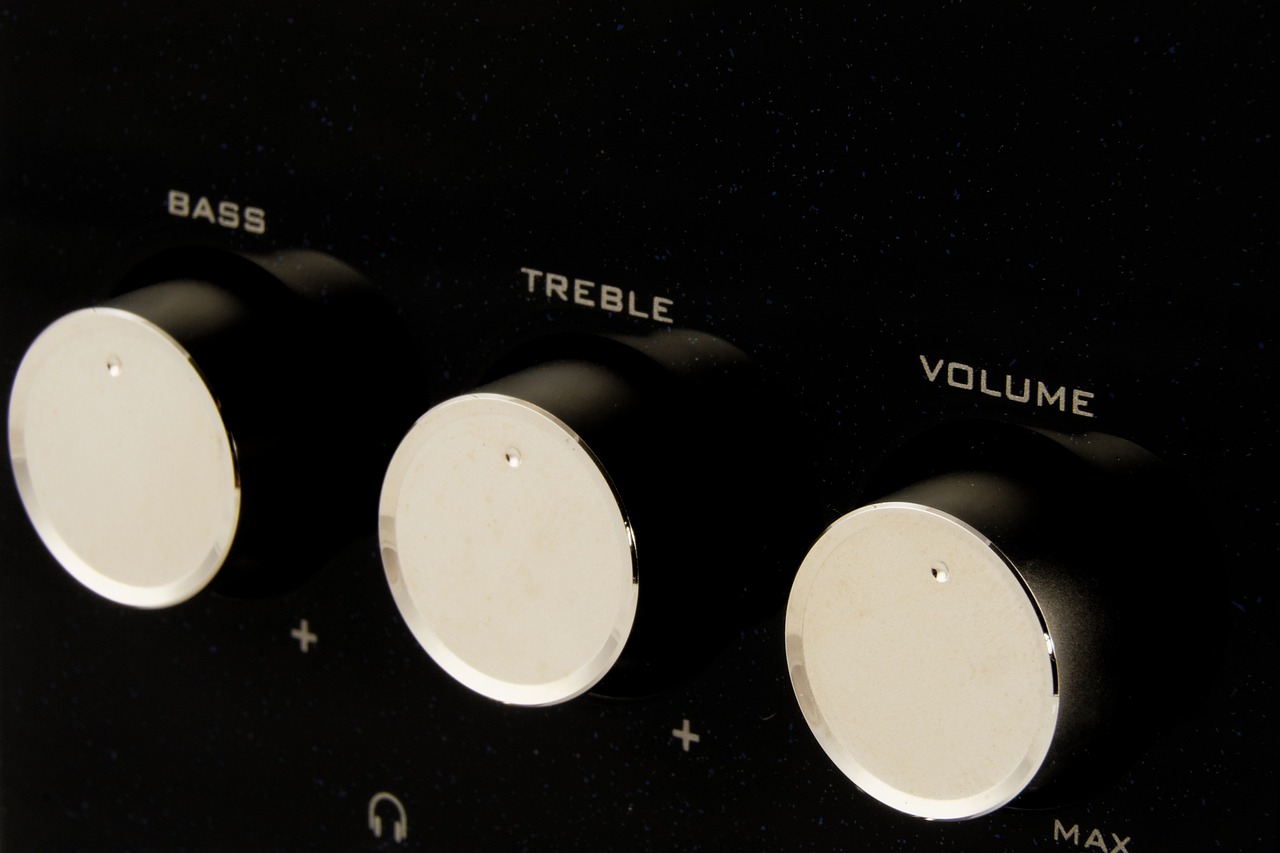
Conclusion: The Importance of Volume Analysis
In summary, trading volume is not just a number; it is a vital indicator that can significantly influence trading strategies and investment decisions. Understanding volume analysis allows traders and investors to gauge market sentiment, identify potential price movements, and make informed decisions. As we’ve explored throughout this article, volume can signal bullish or bearish trends, and recognizing these signals can be the difference between a profitable trade and a costly mistake.
Moreover, volume analysis is essential in various market conditions. Whether the market is trending upward, downward, or moving sideways, volume provides clues about the strength of the current trend. For instance, a surge in volume during an upward price movement often indicates strong buying interest, suggesting that the trend may continue. Conversely, if prices rise with low volume, it might signal a lack of conviction among buyers, hinting at a potential reversal.
Additionally, the relationship between volume and market liquidity cannot be overstated. High trading volume typically correlates with greater liquidity, allowing traders to enter and exit positions with minimal price impact. This is particularly crucial during significant market events, such as earnings reports, where volume spikes can forecast stock price reactions and help traders position themselves accordingly.
Ultimately, incorporating volume analysis into your trading toolkit enhances your ability to navigate the complexities of the financial markets. By paying attention to volume trends, you can better understand market dynamics and improve your decision-making process. So, the next time you analyze a stock or a trading opportunity, remember to look beyond the price charts and consider the volume—after all, it’s the unsung hero of trading!
- What is trading volume? Trading volume refers to the total number of shares or contracts traded for a specific security during a given time period. It is a key indicator of market activity and liquidity.
- How does volume affect price movement? Changes in trading volume can indicate potential price movements. A surge in volume often precedes significant price changes, whether upward or downward.
- Why is volume analysis important? Volume analysis helps traders and investors gauge market sentiment, identify trends, and make informed trading decisions, ultimately improving their chances of success.
- What are some common volume indicators? Popular volume indicators include the On-Balance Volume (OBV), Chaikin Money Flow (CMF), and Volume Moving Average, each providing unique insights into market dynamics.
- How can I use volume during earnings reports? Monitoring volume during earnings reports can help forecast stock price reactions. A significant increase in volume often indicates strong investor interest and can provide clues about future price movements.
Frequently Asked Questions
- What is trading volume?
Trading volume refers to the total number of shares or contracts traded for a specific security or market during a given period. It's a crucial metric that helps traders gauge the activity level and liquidity of a market, influencing their trading strategies.
- How does trading volume affect price movement?
Trading volume can significantly impact price movement. Typically, higher volume indicates stronger interest in a security, which can lead to larger price movements. Conversely, low volume may suggest a lack of interest, resulting in smaller price changes. Understanding this relationship helps traders anticipate potential trends.
- What does a volume spike indicate?
A volume spike often signals a change in market sentiment or the beginning of a new trend. For instance, if volume surges during a price increase, it may indicate strong bullish sentiment, while a spike during a price drop could suggest bearish sentiment. Traders use these spikes to make informed decisions.
- How can I identify bullish and bearish trends using volume?
To identify trends, traders look for increasing volume accompanying price increases (bullish) or price decreases (bearish). If the price rises with high volume, it suggests strong buying interest. Conversely, if the price falls with high volume, it indicates strong selling pressure, helping traders make strategic decisions.
- What are some common volume indicators used in technical analysis?
Popular volume indicators include the Volume Moving Average, On-Balance Volume (OBV), and Chaikin Money Flow. These tools help traders analyze volume trends and identify potential buy or sell signals, enhancing their overall trading strategies.
- How does trading volume behave in different market conditions?
In bullish markets, trading volume typically increases as more investors enter the market, driving prices higher. In bearish markets, volume may also rise as traders exit positions. In sideways markets, volume can fluctuate but often remains lower, indicating indecision among traders.
- Why is trading volume important during earnings reports?
Trading volume during earnings reports can provide insights into how investors react to the results. A significant increase in volume can indicate strong interest and potential price movement based on the earnings surprise, helping traders anticipate market reactions.
- What is the relationship between trading volume and market liquidity?
Higher trading volume generally correlates with greater market liquidity, allowing traders to execute orders more efficiently without significantly impacting prices. In contrast, low volume can lead to slippage and difficulty in executing trades at desired prices.





